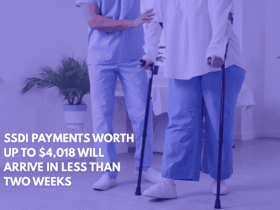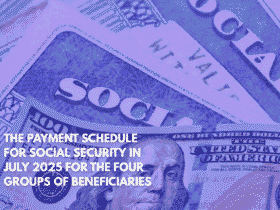April has come to an end, and with it, the last round of Social Security payments has been made in the United States. These payments went out to retirees, disability beneficiaries, and widows—especially those born between the 21st and 31st of any month.
The Social Security Administration (SSA) has now confirmed that no more payments will be made for April 2025.
This news is important for millions of Americans who depend on Social Security income every month to handle essential expenses like rent, food, and medicine.
2025 COLA Increase Brings Relief to Beneficiaries
One of the key updates this year has been the Cost-of-Living Adjustment (COLA) of 2.5%, which started from January 1, 2025. This increase was added to help families, especially seniors, keep up with rising prices.
Thanks to this COLA, retirees who have delayed their retirement until the age of 70 can now receive a maximum payment of $5,108 per month. This is an increase of over $150 compared to previous years.
What’s Coming in May 2025?
Although April payments are now complete, SSA has already released the full payment schedule for May 2025. And there’s a surprise this month—two Supplemental Security Income (SSI) payments will be made in May because June 1 falls on a Sunday, and payments scheduled for that date will be made earlier.
Full Social Security Payment Schedule for May 2025:
- May 1 – SSI (Supplemental Security Income)
- May 3 – Retirees who started receiving benefits before 1997
- May 8 – People born between the 1st and 10th of any month
- May 15 – People born between the 11th and 20th
- May 22 – People born between the 21st and 31st
- May 30 – Early SSI payment for June
If you’re expecting a direct deposit and don’t see the payment after 3 days, it’s best to contact Social Security immediately to check for issues.

How to Maximise Your Social Security Payment
If you’re thinking long-term and want to receive the highest possible monthly Social Security payment, here are three smart steps to consider:
Delay Retirement Until Age 70
The longer you wait to start collecting Social Security, the more money you’ll receive. Payments increase by around 8% for every year you delay beyond your full retirement age, up to age 70.
Work for at Least 35 Years
SSA calculates your payment based on your highest-earning 35 years. If you work fewer than 35 years, the missing years will be counted as zero income, which can lower your average.
Aim for Higher Income Over the Years
The more you earn during your working years (especially if you pay into Social Security), the higher your benefit amount will be. Higher lifetime earnings = higher monthly payments.
By following these three steps, you could end up receiving a payment close to the maximum amount of $5,108 per month, rather than the average amount, which is usually between $1,800 and $2,500.
With all April payments now complete, it’s time for beneficiaries to look ahead to May and beyond. The SSA continues to adjust Social Security benefits to help people keep up with rising living costs.
Whether you’re a retiree, someone with a disability, or receiving survivor benefits, it’s important to stay updated with the schedule and follow the right steps to make the most out of your benefits.
Understanding how the system works and planning wisely can help you secure a better future and reduce financial stress. Remember, Social Security is more than a monthly check—it’s a key part of your long-term financial security.











Leave a Reply